The difference between LCD panel technologies
Up to now, the most commonly used screen panels are TN, IPS and VA. Certainly you've heard of these before, in the process of getting to buy a monitor and obviously, the type of panel is an important piece of information that reveals a lot about how monitors work.
The following is a brief overview, before the article focuses on the specific characteristics of each technology and how they work.
TN , which stands for Twisted Nematic, is the oldest of all LCD technologies. This technology refers to the twisted nematic effect, which allows liquid crystal molecules to be controlled by voltage. Although the actual operation of the TN effect LCD is a bit more complicated, basically the TN effect is used to change the alignment of the liquid crystal when applying the voltage. Therefore, when there is no voltage, the crystal is 'turned off', the liquid crystal molecules are twisted 90 degrees and combined with polarized layers, allowing light to pass through. Then, when a voltage is applied, the crystals basically no longer twist and block the light.

VA , stands for Vertical Alignment . As its name suggests, the technology uses vertically arranged liquid crystals that tilt to the side when a voltage is applied so light can pass through. This is the main difference between IPS and VA. With VA, the crystals are perpendicular to the substrate, whereas with IPS, they are placed in parallel. There are several VA variants, including Samsung SVA and AU Optronics AMVA.
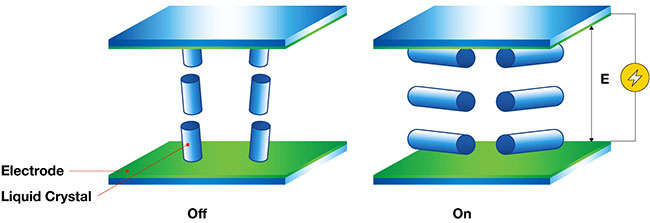
IPS stands for In-Plane Switching and, like all LCDs, it also uses voltage to control the alignment of liquid crystals. However, unlike TN, the IPS LCD screen uses a different crystal direction, in which the crystals are parallel to the glass substrate surface. Instead of 'twisting' the crystals to modify the amount of light passing through, the IPS crystals are basically rotated and this creates a lot of benefits.
There are many IPS variants on the market and the three major LCD manufacturers use different terms to describe their IPS technology. LG simply calls its technology IPS , very easy to understand for everyone. Samsung uses the term PLS (short for Plane-to-Line Switching ), while AU Optronics uses the term AHVA (short for Advanced Hyper Viewing Angle ). AHVA should not be confused with conventional VA screens. AHVA is a technology like IPS. LG's IPS, Samsung's PLS and AUO's AHVA will be a bit different, but the basic principles all come from IPS.
In short, the TN panels are twisted, the IPS uses parallel and rotating alignment, while the VA panels align vertically and tilt the crystals. Now let's dive into some performance characteristics and explore how each technology is different, as well as which is better by specific criteria.
What are the differences between TN, VA and IPS technologies?
- View
- Brightness and contrast
- Color quality
- Color strip
- Refresh rate
- Response time
View
So far, the biggest difference between the three technologies is in perspective. TN panels have the worst viewing angle, with significant changes in color and contrast in both directions (especially vertical). Usually the viewing angle is rated as 170/160 but in fact, you will get changes in the direction of the bad when looking at any point, except for the front. High-class TN panels tend to be a bit better, but overall this is a major weakness of TN.
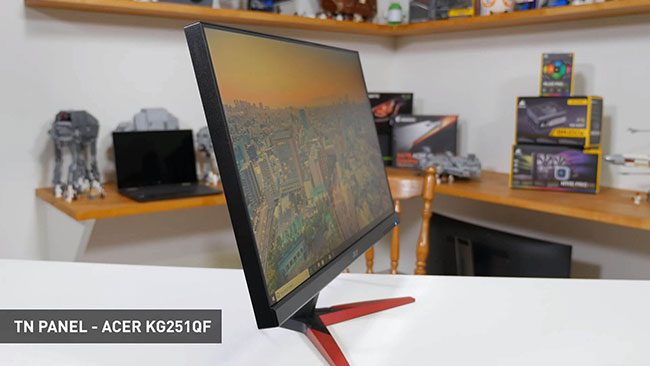

The VA and IPS panels are both significantly better, of which IPS is best for overall viewing. The 178/178 viewing angle rating is a realistic reflection of what you can expect with IPS. There is not much change in color or contrast from any angle. VA performed very well in this regard but not as well as IPS, mainly due to the change in contrast in the corners outside the center. With VA and especially TN, there are some color changes and contrast when viewed at the corners, they are not suitable for the professional work about color as important as IPS panels. That's why you see most professional-grade monitors use IPS.
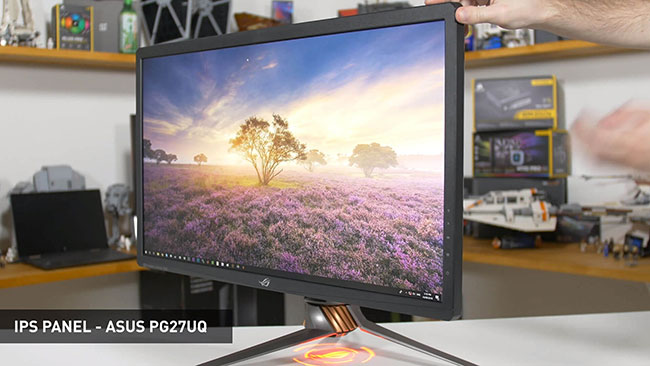
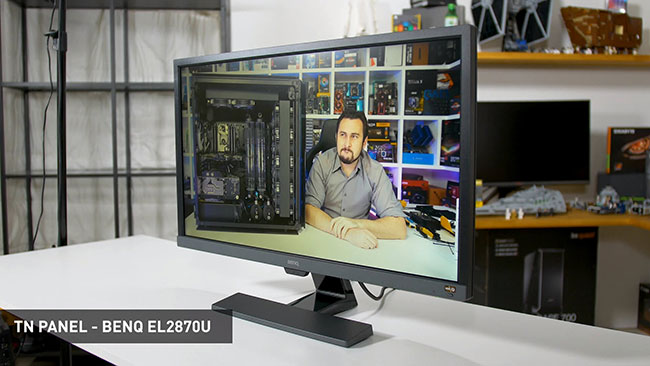
Brightness and contrast
In terms of brightness, there is no difference between these technologies because the backlight section determines the brightness, separate from the liquid crystal panel. However, there is a significant difference in contrast ratio, and this is what most people need to consider when determining what type of panel they need.
Both TN and IPS panels have a contrast ratio of about 1000: 1, although there were some differences in our testing. TN panels have the lowest contrast ratio when calibrated, ranging from 700: 1 to 900: 1 (with base panel) and up to 1000: 1 (with better panel type). IPS has a larger range, some panels have a low contrast ratio of 700: 1 like TN, however, the best ratio can push to higher levels than TN (1200: 1 for desktop and 1500 : 1 for some laptop screens).
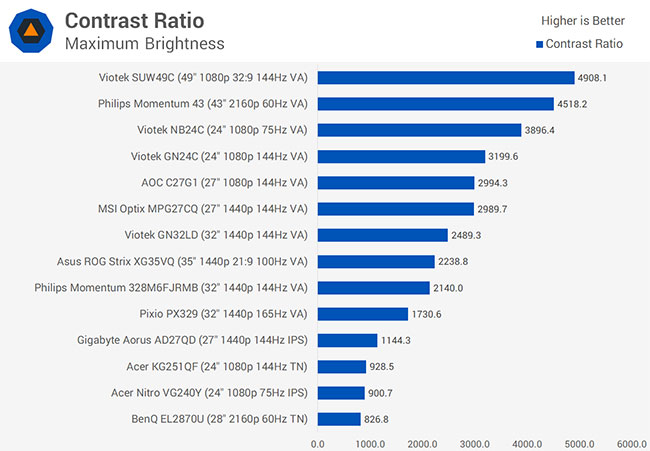
Neither TN nor IPS have reached as wide a range as VA.
Basic VA panels start with a 2000: 1 contrast ratio and the best level easily surpasses the 4500: 1 mark (typical ratio for most monitors is 3000: 1). The TV mainly uses VA panels and the contrast ratio may be even higher. It's not uncommon to see the contrast ratio set to more than 6000: 1. So if you want true dark areas and high contrast ratios, you'll need to choose a VA panel.
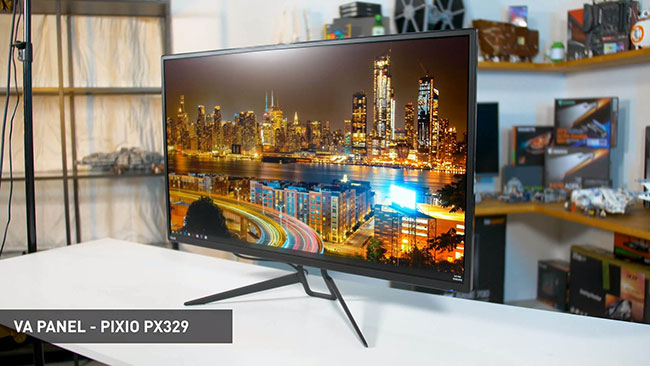
Although the IPS panels have a moderate contrast ratio, they experience IPS glow. It is the phenomenon of a clear white light appearing at an angle when viewing dark images. The best panels limit this exposure to a minimum, but this is still a problem on all screens.
Color quality
Color quality is another difference that many people notice between TN screens and other panels. Color quality can be divided into two criteria: color depth or bit depth and color gamut. In both criteria, the TN panels tend to fall into a weaker position. Many TN monitors, especially the basic models, are actually only 6-bit types and use FRC (Frame Rate Control) to achieve standard 8-bit output. 6-bit panels are prone to color banding (display of incorrect colors), while original 8-bit panels have a 'smoother' color gradient and therefore better color output.
Not all TN panels are 6 bits. The most advanced TNs are the original 8-bit types, but most TN panels will be only 6-bit types, even for the moment. If you want the original 8-bit screen, you'll have to use IPS or VA, with more options.
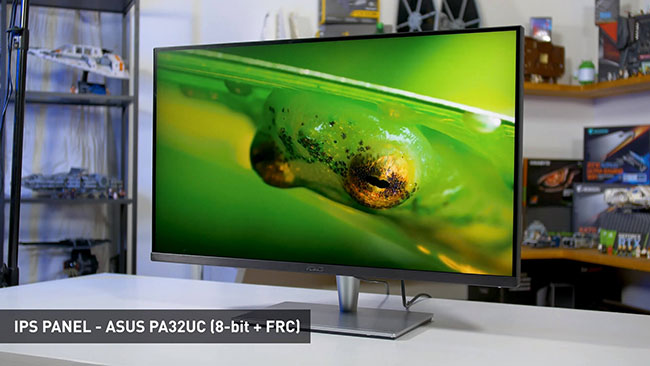
Although there are still basic IPS and VA panels of the 6-bit category, most medium to high-end options are 8-bit.
For a 10-bit panel type, usually you will need to find an IPS panel. Some VA panels may own this parameter, but very rare. Most monitors you buy are 10-bit, but they're actually 8-bit + FRC, only professional-grade monitors offer the original 10-bit experience.
Color strip
This is another part where VA and IPS provide a superior experience. The best TN panels tend to be limited to sRGB or, in the case of the worst base panels, they don't even cover the whole sRGB range. TN panels with a wider color range also appear, but they are rare.
VA panels usually start with the full sRGB range to a minimum and, depending on the model, this range may be wider. VAs use quantum dot film, typically from Samsung, which offers larger color gamut, about 125% sRGB or 90% DCI-P3. Most of the common VA monitors tested fall in the range of 85 to 90% DCI-P3. This is a good result, although the best level can reach 95% or higher.
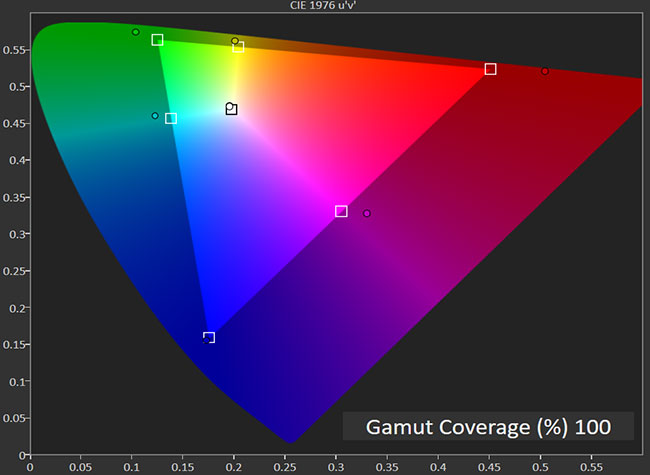
IPS panels have the largest difference. Basic IPS displays tend to achieve 95% sRGB or lower, while most models fall within the full sRGB range. With high-end displays, often reserved for professionals, it's not uncommon to see the full DCI-P3 and Adobe RGB range appear. Of all tested IPS monitors with a wide color range, the lowest DCI-P3 range is 93% and 95% is the typical number. This makes IPS the best technology in terms of wide color gamut.
Refresh rate
Throughout most of this article, we talked about TN as the worst of the three options. Until now, TN has the ability to reproduce colors, contrast ratio and the worst viewing angle. But TN has a great advantage in speed. TN panels are the best option, both in terms of refresh rate and response time.
Currently, TN is the only panel type that can reach speeds of 240Hz at 1080p and currently 1440p. VA panels reach 200Hz for Ultrawide displays, however most 16: 9 models are limited to 165Hz. IPS panels also topped the list at 165Hz, although LG has the 240Hz option at 1080p.

Although IPS panels can refresh at 144Hz and above, the number of panels with high refresh rates is limited compared to both VA and TN. Almost every IPS screen, especially the advanced options for professionals, as well as the basic office monitor, is 60 or 75Hz. Meanwhile, a significantly larger number of VA panels, with a wide range of sizes and resolutions, will have high refresh rates. And the main advantage of TN is the super high refresh ability.
Response time
Another key point to consider is the response time, which governs the overall level of ghosting, blur, and overall clarity of a background. IPS and VA panels initially had very slow response time, but this has been greatly improved on modern panels, so the difference between these three technologies is not as clear as before. With that said, TN still retains a huge advantage here.
Most TN panels have a transition time of 1ms or even lower with some recently released options. The average time levels to convert from grayscale to gray are actually measured for TN panels that tend to be in the 2 - 3ms range. This makes TN the fastest technology in terms of response time.
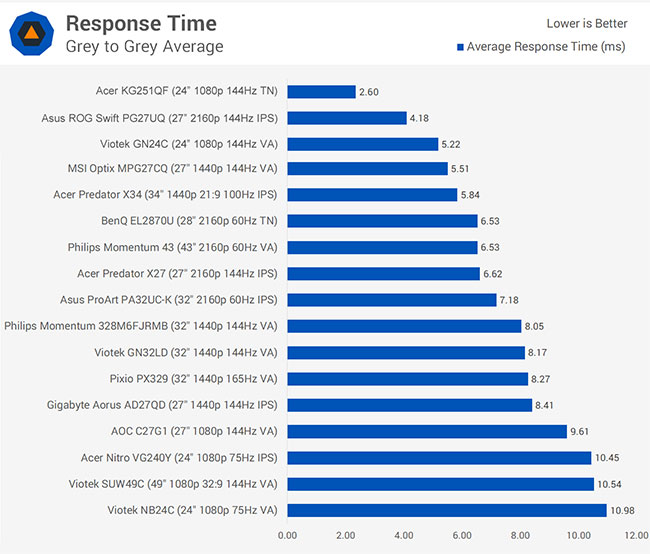
IPS panels take second place in terms of speed, although the trend is similar to IPS, there is a big difference between the best and worst options of this type of panels.
High-end IPS screens, typically those with high refresh rates, can have a transition time of 4ms. This makes IPS works better than the best TN panels. However, basic IPS panels or models without overdrive feature will be close to 10ms, while mid-range options tend to be between 5 and 7ms.
VA panels are always the slowest of the 3 technologies. The fastest speeds measured are between 5 and 6ms, although typical numbers range from 8 to 10ms for gaming-grade monitors. VA panels also tend to be at least consistent in conversion. Some individual conversions can be very fast, while others are very slow.
Although many people may not realize the difference between VA 8ms and 5ms IPS panels, at least this is more clearly shown in motion. The sluggish VA panels also limit their actual refresh rate: The 144Hz panel has a 9ms response time, which actually delivers an image equivalent to the 110Hz panel. While most 144Hz IPS panels can switch faster, resulting in a true 144Hz experience. So this is a point to consider.
In short, TN panels are fast options and have the highest refresh rate, but they have poor viewing angles, as well as weak color performance and lowest contrast ratio. TNs are commonly used for ultrafast gaming monitors, as well as affordable desktop and laptop screens.
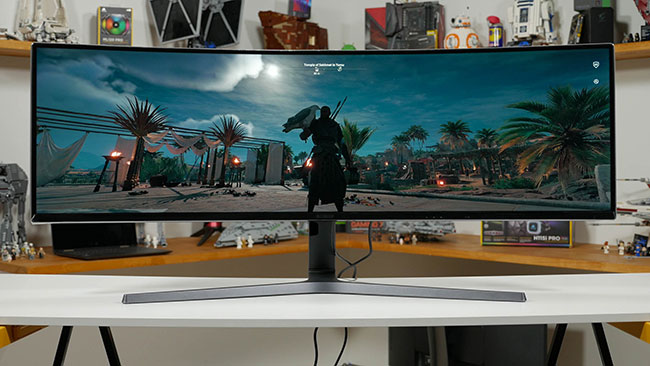
IPS is a mid-range technology. They often have the best color performance and viewing angle, response time, refresh rate, along with black levels and average contrast ratio. Thanks to the most advanced color output, IPS panels are the right choice for professionals, but you'll also find them in basic displays, office monitors, most laptops and some Little gaming screen.
VA panels are the slowest option among the 3 technologies, but have the best contrast ratio and black levels to date. Color performance is not decent, but they still provide a significantly better experience than TN.
With the response time for the best modern VA panels up to the level of conventional IPS, along with extensive support for high refresh rates, VA technology is commonly used for gaming monitors. Basic VAs also tend to outperform TN and IPS panels of the same level, although VA is not used in laptops.
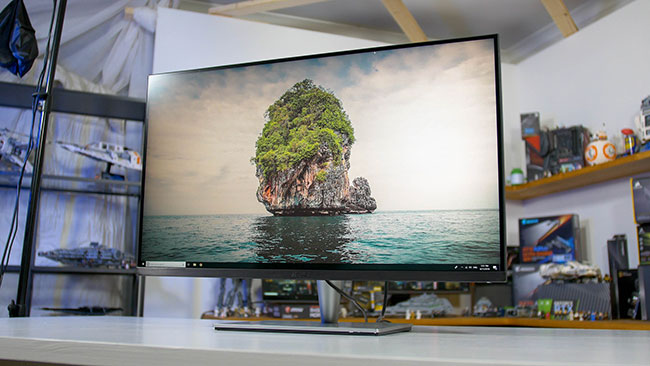
There is no exact answer to which screen technology question is the best, because each option has its own strengths and weaknesses. That is why all three coexist on the market to this day. However, if you want to get a recommendation, VA panels seem to be an attractive option for most buyers, especially gamers and casual users. Creative experts should opt for an IPS display, while those who need a super-cheap or ultra-high refresh rate for gaming should choose TN.
Wish you find yourself a suitable choice!
 How to teach children how to use the mouse?
How to teach children how to use the mouse? The secret to buying a CPU
The secret to buying a CPU Top 9 best cheap gaming mice 2019
Top 9 best cheap gaming mice 2019 Top best wireless mice 2019
Top best wireless mice 2019 Where to buy good computer mouse, cheap?
Where to buy good computer mouse, cheap? How to choose an appropriate mechanical keyboard
How to choose an appropriate mechanical keyboard